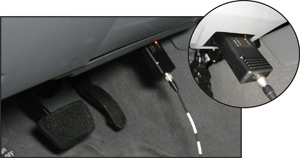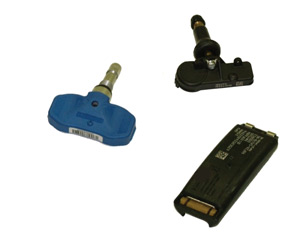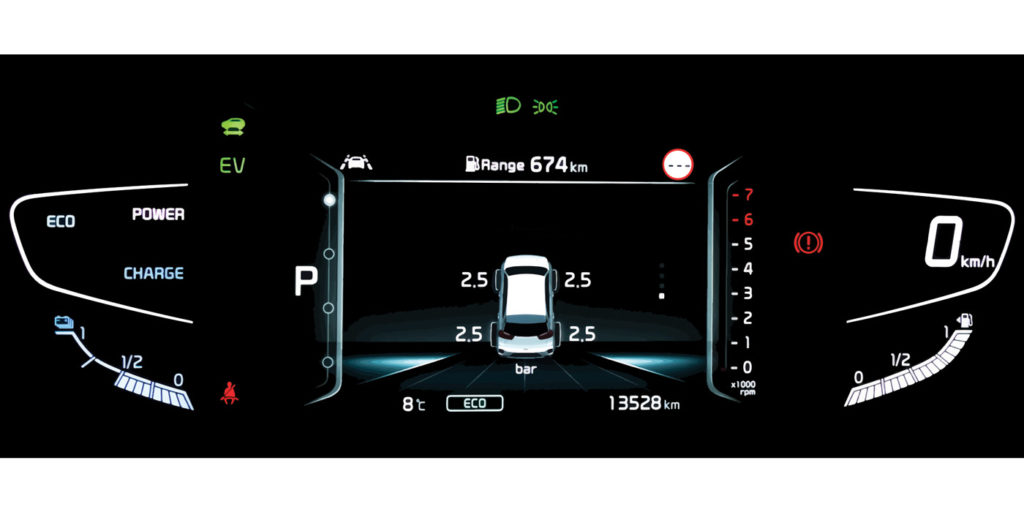By Scot A. Holloway, General Manger, Bartec USA, LLC
The increasingly hot topic of Tire Pressure Monitoring Systems (TPMS) is very controversial yet compelling. TPMS brings about confusion and aggravation, but more importantly, opportunity. Adding to the TPMS frenzy is loads of information. This article will discuss a couple of new issues within TPMS that you need to be aware of.
TPMS Sensor Commissioning
Recent developments in TPMS have some sensors showing up in the aftermarket in a storage mode. In order to conserve sensor battery life, TPMS sensors are sometimes shipped in “off mode,” “de-energized mode,” “accelerometer off” or “shipping mode.” In some instances like the “banded sensors” that Ford currently uses, simply putting the sensor under pressure will energize or turn the sensor on. Other sensors require a special Low Frequency (LF) command to change their mode. For the latter, a TPMS tool is required, one that has this special LF command.
Diagnostic Point: Sensors that are not properly commissioned (or set-up), can be successfully programmed to the vehicle, only to have the owner drive away and have the TPMS warning light come on at a later time.
TPMS and DLC (OBD) Programming
The majority of the Asian vehicles have adopted a repair process that has made aftermarket repair of TPMS difficult. While there are some TPMS trigger tools that can in fact activate and decode the sensors found on Toyota, Honda and Nissan vehicles, in each of the cases another tool is required to perform sensor replacement — that tool is a scan tool.
That’s right, each of these and many other import vehicles require a corporate scan tool to be  connected to the Data Link Connector (DLC) to complete TPMS service. Every time a TPMS sensor is replaced or rotated, this scan tool must be connected to the DLC and the IDs keyed into the scan tool for programming to the vehicle.
connected to the Data Link Connector (DLC) to complete TPMS service. Every time a TPMS sensor is replaced or rotated, this scan tool must be connected to the DLC and the IDs keyed into the scan tool for programming to the vehicle.
What does that mean to the aftermarket? Well, a couple of things actually. First, TPMS is a little more complicated now that scan tools are involved; second, getting the right aftermarket TPMS tool is even more critical today than ever before. The aftermarket solution should be based on the same process by which the car or truck is programmed at the time of manufacture; a process derived from the OE method is the most accurate and efficient.
TPMS Sensor Changes
With model year 2009 now upon us, keep your eyes open for some changes in sensor technology from the OEs. Ford is now using a “snap in” style TPMS sensor on some of their trucks and SUVs. Subaru has also changed its strategy as the company is now using both the “clamp in” and the “snap in” styles of sensors on certain models. Hyundai and Kia have added a new twist to the sensors they are using. Depending on the model car, the sensor’s status has to be changed from HIGH to LOW. This again requires a special LF command. Also new for Chrysler is a “snap in” variant to their current specification (on limited models).
Unfortunately, the only thing consistent about TPMS is the change that seems to occur on a regular basis. To navigate through this challenge-filled opportunity you will need knowledge, training, technical support and superior tools. There is plenty of each and there are a few companies that offer the complete package.
Scot Holloway is the general manager of Bartec USA, LLC. Bartec USA and the Bartec Group of companies have long been experts in TPMS. With more than 80 TPMS installations worldwide, Bartec programs the TPMS of all varieties of makes and models. Currently, Bartec brings this level of expertise and understanding to the complete range of aftermarket TPMS tools. Visit www.bartecusa.com for more information on Bartec USA and Bartec Auto ID.













